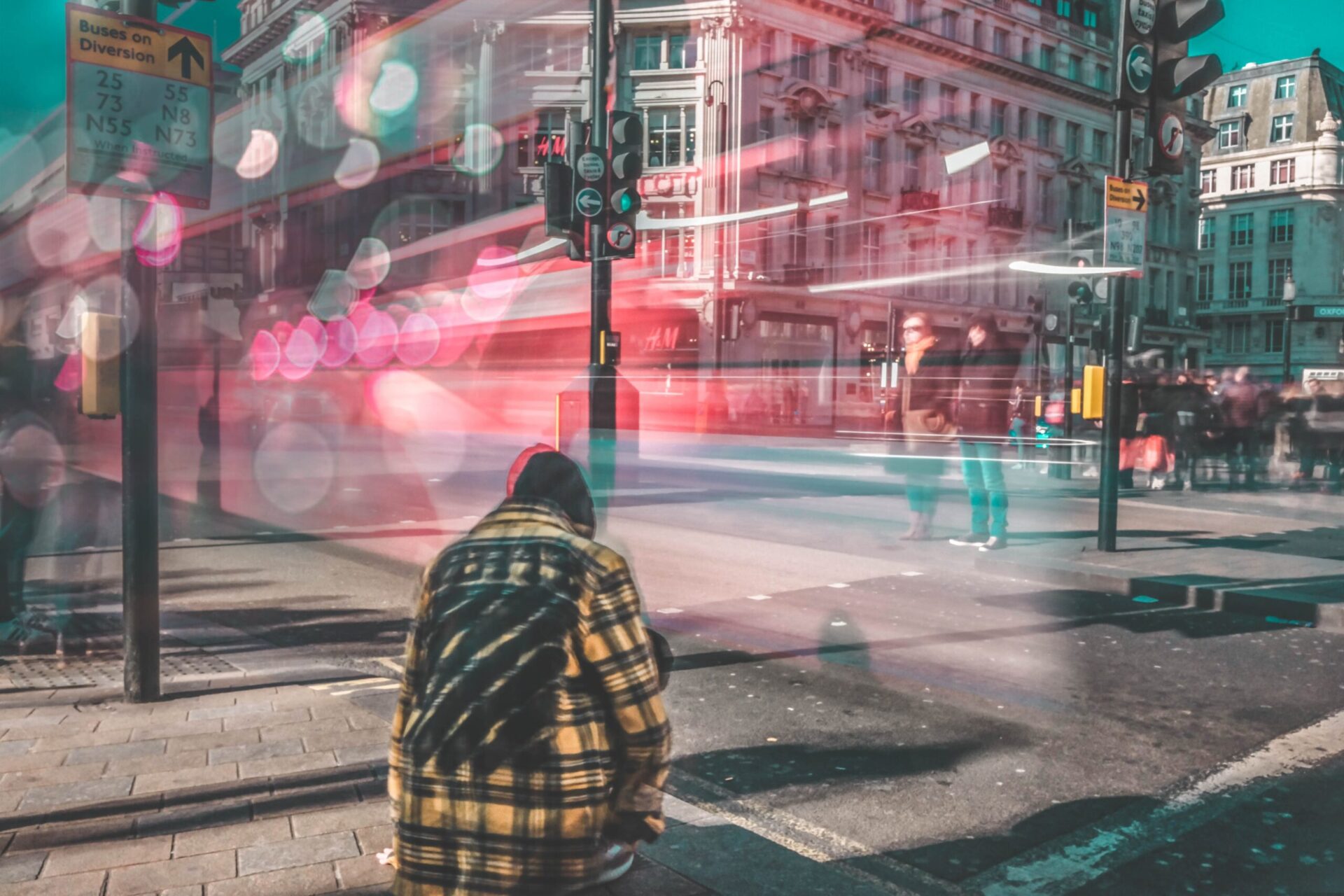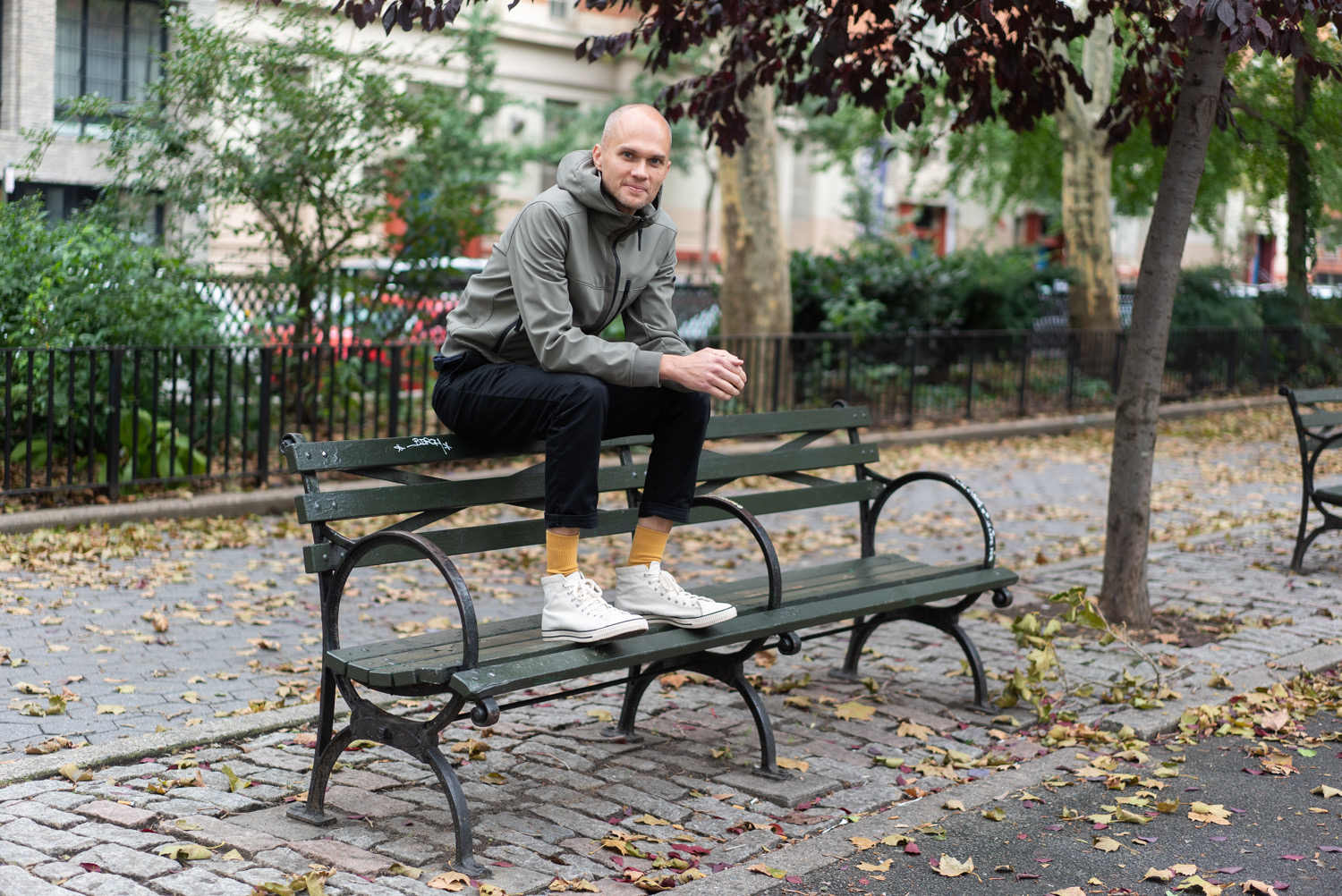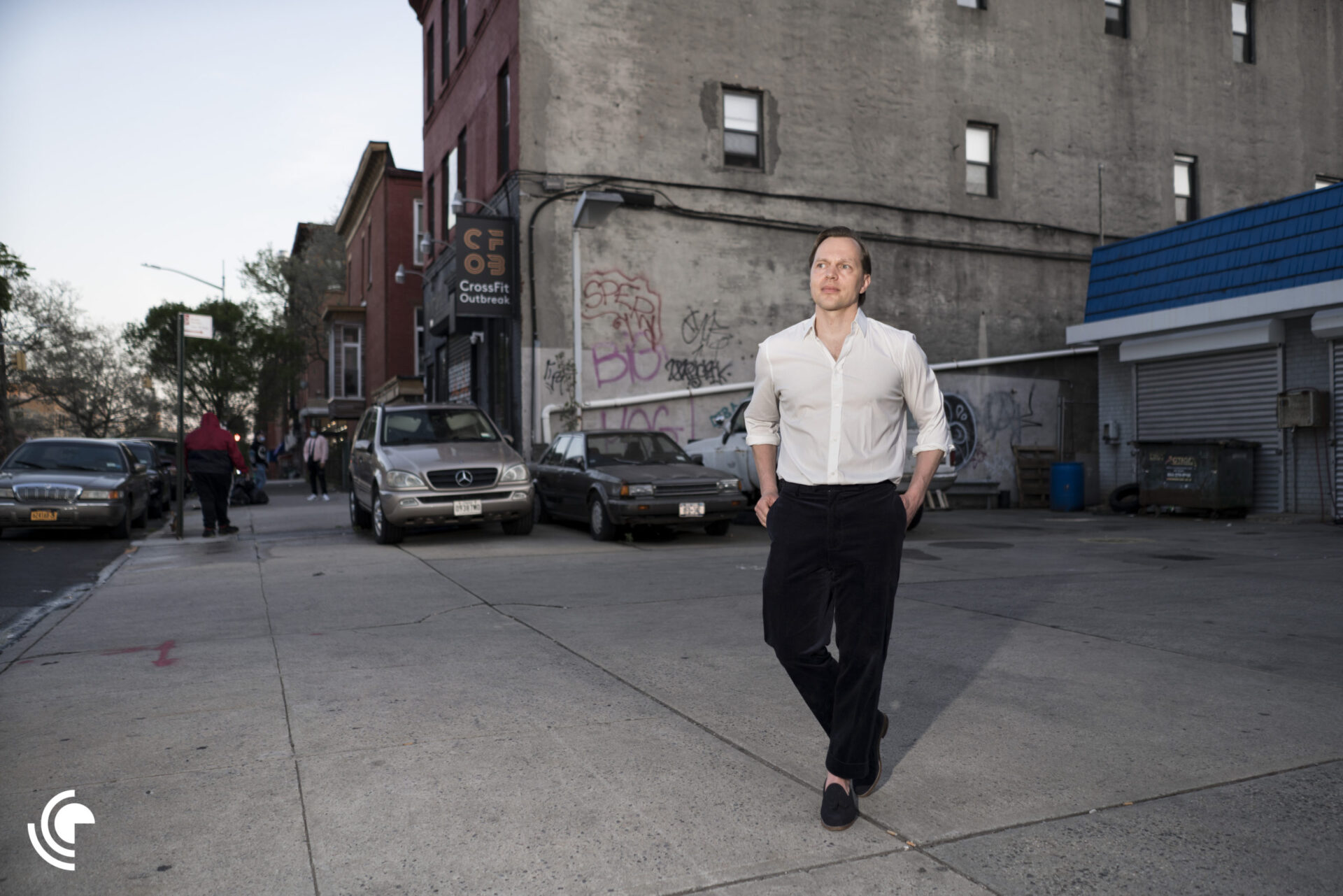Doing Wellness Well: The Paradox of Agency
A Gemic Whitepaper The world of wellness has transformed from an industry into a culture. The practices and beliefs of the modern human is rooted in the ways we imagine ‘living well’, which currently exalt the notion of wellbeing and balance across the emotional, social, psychological, economic, political, and spiritual realms of life. We deeply value how well this is ‘achieved’ by the individual, whether in personal or professional domains.
From a health agency perspective, we’ve never been more individually powerful – or more vulnerable.
With the balance of power falling more heavily in the laps of the everyday person than traditional healthcare providers, it is assumed that individuals will engage with their health and wellbeing to the fullest and to make the greatest use of the agency afforded them.
But agency in today’s health context is a double-edged sword. Definitions of health are expanding to become ever more holistic and so too has the market. The onus to optimize the self and body as a marker and sort of “insurance policy” for success and security has also never been stronger. Now, people navigate maddeningly myriad ways to continually surveil themselves and, in turn, try to “solve for” the many potential problems such a gaze elicits. The wellness economy, above all else, acts as both a solution and driver of this current cultural arrangement.
The emergence of the Wellness Age
The world of wellness has transformed from an industry into a culture. The practices and beliefs of modern humans are rooted in the ways we imagine “living well,” which currently exalt the notion of wellbeing and balance across the emotional, social, psychological, economic, political, and spiritual realms of life. We deeply value how well this is ‘achieved’ by the individual, whether in personal or professional domains.
But this doesn’t mean that wellness yet transcends being defined foremost by industry; wellness is a commodity, a resource to be bought, consumed, and sold. How it came to be so, tells the story of why it cannot be decoupled from this relationship, given the important human role it plays in the overall economy.
The wellness movement has grown in a context where trust in traditional authority and metanarratives of power have broken down and global structures have revealed themselves uncertain and fragile. Many factors coalesce to drive this: environmental and ecological movements since the 1970s have delivered a painful awareness of the connectedness between our actions and the world; Western bio-medicine’s monopoly over health and the patient relationship continues to dissolve in the face of increased corporatization and technologization; the globalization of markets, disintegration of the nation-state, undoing of gender binaries, mass migrations, environmental disasters, and the nuclear threat have resulted in the erosion of 20th-century identity roles.
With the dissolution of structures that give us meaning and security, a massive and complex wellness industry has rushed to fill a void, encompassing the worlds of food, fashion, mobility, life sciences, consumer technology, leisure and hospitality, urban design, retail, digital everything, and beyond.
Individual wellness: Today’s primary currency
The rise of the wellness economy is not just a symptom of the undoing of once-stable social structures. Simultaneously, it often serves to perpetuate this very situation.
In a time where many lack yesterday’s signifiers of success – homes, cars, economic capital and the like – we are left with ourselves, our bodies and minds, to leverage. This limits the ways in which we’re free to secure ourselves within the world, and in doing so, how one takes care of oneself transforms into the primary signifier for what kind of person they are and can be. Participation in the wellness economy becomes less a choice than a must; as the individual becomes the subject of investment, the question is not if one participates, but how well.
The problem with this is that wellness is the new luxury in many ways, but less honestly so. Like the luxury market, it’s not actually designed for everyone, but often fancies itself to be so. Luxury markets were traditionally about aspiration but framed intentionally for the upper few, and offered a fairly prescribed set of offerings. In contrast, the expansiveness of choices in the wellness market and focus on holistic life outcomes drives an expectation that to the masses it shall get – that even with sometimes highbrow offerings and exorbitant price points, access is a presumed given, and it is simply up to the individual to take hold of and leverage these offerings to the fullest.
And, with a vast array of goods and services promising improved health, yet being delivered only in the consumer realm (rather than being covered by socialized medical systems), a longstanding neoliberalist paradigm in which responsibility lies with the individual is further perpetuated – the role of social care systems are swept away as individual consumption and action become a prerequisite for modern survival.
Casting the eye inward
In this arrangement, the role of informal interpersonal relationships takes precedence. As wellness is framed to be holistic and all-life encompassing, so too is the performance of it. Humans have always “performed achievement” in one way or another, which has a demonstrative but also reproductive effect; when we believe who and what we see, we celebrate and therefore reinforce their belief systems and associated practices.
Today, wellness is not just sold between market players in the formal economy but is continually being “sold” through interpersonal engagements in the social economy – not just as a signal of social and cultural capital, but acting, I would argue, as the defining marker for achievement in today’s global landscape. In order to perform to the fullest, we must be watchful and mindful of our every personal move, engaging in a form of hyper self-surveillance that can be emotionally draining and psychologically overwhelming.
The experience of surveillance and the onus to self-surveil are not impelled by only the wellness economy of course. We live in an era where the topic of surveillance and privacy festers in the public consciousness, driven largely by the ways in which human personal data is shared, stored, and manipulated. This extends not only to the online world, where our second selves exist as either carefully curated representations or discrete sets of data we have little to no control over but the offline world where we are virtually always being watched; our every move in public places captured and tracked on video.
No time to waste
A number of other cultural shifts align and coincide with the emergence of wellness culture. For one, much has been made of the notion that millennials somehow inherently value experiences over things. But it can just as easily be suggested that millennials may lack the ability to accumulate things and in response, experiences become a source for achievement and meaning – that experiences have value in culture precisely as a result of economic limitations.
Interestingly, the experience economy transforms and revalues how we see time. It states that time is of the essence – as one among few “possessions,” it cannot be wasted and so must be optimized for memory-making, for doing, for action. That time is a space that is fillable as we choose, and where non-action is something to scoff at. Similarly, our culture today glorifies the entrepreneur and the entrepreneurial mindset, which is founded on risk-taking and seizing the moment. These dominant values lead to pressure to imbue each moment and move with meaning, and to jump on any signal of potential. The failure to take hold translates into the failure to live well and to attain the expanding definition of health, in turn.
Breaking down bodies
As each minute is scrutinized and broken down, so is each facet of our bodies and selves. Our contemporary culture likes to claim that we have reached a point of maturity and self-awareness that appearance doesn’t matter, that it is what’s inside that counts, but in a culture of wellness, appearance and performance are inherently social cues that may ‘say’ more about the individual now than ever.
Objectification theory proposes that in a society in which people are valued highly for their appearance, continual exposure to objectification from others leads people to take on a third-person perspective of their own bodies; they view, monitor, and judge themselves against an ideal standard. When these are out of alignment, feelings of dissatisfaction, shame, and anxiety can result.
But what happens when these ideal standards themselves start to break down?
Global movements tackling the breakdown of the cis-gendered self and body are a ripe example of how fluid and fragmented the very notion of identity has become. The wellness economy has served as both a champion for and beneficiary of these shifts, operating at the intersection of new engagements with and articulations of the body, and in doing so, giving permission and space for the ‘other-bodied’ and the non-cis-gendered to flourish.
Cultural phenomena abound that tell this story-in-the-making, such as the body-positivity movement, or the institution of hegemonic masculinity under fire in the face of #metoo and the global rise of hyper-masculine authoritarian governments, populism, and nationalism. These movements and shifts expose long-held ideals that, to be sure, are deeply problematic for society on the whole. But they also force a new kind of engagement with the body and self-making, prompting us to see the spaces between dominant boundaries and binaries – making the invisible visible, but also necessitating that people look at the world around them, and the assumptions they hold dear, for what it is.
This truth often isn’t pretty. And it takes real, emotional labor to unravel the complex and deep-seated factors in our personal and shared histories that shape why we feel certain ways when we look in the mirror – a painful kind of self-surveillance, in and of itself. Not surprisingly, anti-movements to the above, such as in the context of the questioning and re-formation of what it means to be a man, emerge in a doubled-down attempt to retain the hegemonic expressions and definitions characterizing a preferred past era.
Nonetheless, the emergent identities given rise by these global movements, in flux and myriad, means permission for one to explore. The broad array of offerings in the wellness economy make this possible, and indeed the wellness market has helped expose these dominant discourses themselves. For example, the sanction against male self-care – and notions of ‘vanity’ or ‘self-indulgence’ connected to it – has been dismantled as market offerings become intentionally less gendered and part of the standard wellness project.
The ever-looming potential of illness
In a culture of self-surveillance, being better – doing better – is a standing invitation. So, too, is illness; its prevention is ever a task to be carried out, and it’s potential to seize us never more so on our minds. As with the broader wellness market, there is an expectation that with patient agency comes the ability and access required to surveil the body in ways that incite positive action. Above the many facets of everyday wellness – social, financial, spiritual, emotional, and so on – illness, or the identified or imagined potential for it, becomes yet another layer with which people must grapple.
In this way, we are all born patients; patienthood extends across the lifespan, as each moment and action of our lives becomes rich with the potential for improvement and greater health. We have seen and will continue to see, incredible advances in our lifetime predicated on this promise. From early identification of genetic risk to the means to decide when and where one’s death can take place, we have a greater ability than ever to predict and act in ways that will determine our health and wellness.
These advances have and will improve our overall health as a society. At the same time, the self-surveillance ask of these endeavors can lead to the opposite intended reaction. When significant mental attention is required from us, a common behavior is to seek means to disengage in any way possible. Trying to escape the encompassing constancy of conditions such as chronic pain – the sensory ‘noise’, the need to pretend it’s ‘not there’ in social situations given the impossibility of its communicability, and the isolation that results – is but one example of what can happen when people fail to get respite and reprieve from an inward focus on the body.
Beyond wellness
The domain of health used to occupy a discrete time, space and set of relationships: sickness was a temporary scenario, dealt with mainly in private, between oneself and their physician. In contrast, the emergence of wellness culture, as a critical aspect of the health delivery picture, reflects and shapes an engagement with personal health that has no beginnings or ends: the project of attaining wellness has the potential to occur at all times of day, in every physical space, and from birth until death; it must be performed in public and in private, as appearance relies on outcomes of consumption occurring everywhere; it involves players and goods across the market spectrum alongside traditional care delivery.
On top of this, in the process of engaging, people navigate new products and tools touted as the answer to something, or the antidote to first answer. Many wellness tools have tapped into this overwhelm, claiming to cast aside the noisy multitude with one simple solution; in doing so, eventually, products become the antidote to the antidote to the antidote, and we find ourselves in a Borgesian nightmare. Not only is self-surveillance and self-construction paramount today, but we are asked to do this in a dizzying market of options, with a fluid and boundless set of paths to take, and with unprecedented personal risk. And in seeing every facet of our lives as a space for wellness to be attained by the individual, we run the risk of pathologizing all of normal life while glossing over the role of local and systemic approaches to help forge the balance and security people need.
If the world of wellness promulgates a problem-fix arrangement, do we see ourselves as inherently flawed and in need of its offerings? What is the alternative? And, if narratives and structures of meaning are being undone, what then becomes the opportunity to support a healthy engagement with those that are emergent?
I don’t claim to have the answers, nor that there are necessarily clear answers at all; to suggest so would likely miss (or contradict) the point. For players in this space, one way to potentially think differently is, in fact, to let go of the idea of answers at all. With the current problem-orientation, the wellness market today has been increasingly serviced by the school of design-thinking. In this vein, the outcome of innovation is often touchpoint solutions designed for today, rather than the addressing of deeper systemic reasons why issues exist – or might exist in the future. The accounting for compensatory behaviors that point to an unformed market, or the mapping and forging of emergent structures that situate the individual as part of a larger system of meaning and support, for example, tend to be overlooked in such an approach to value delivery.
Companies in the wellness space are changing the face of health care, even when they don’t explicitly see themselves as health companies – and arguably for the better. The interesting challenge for these organizations is to understand the ways in which wellness culture, as intertwined with other broad shifts and market and behavioral practices, leads to new experiences that all grapple with in one way or another. This is critical to play within these shifts in order to deliver value yet imagined.
When the offerings of the wellness economy incite a new kind of engagement with the self, they redefine what it means to be alive and human. Just starting with that recognition alone will set organizations apart, helping them to look inward in the way that the culture they’ve helped generate asks of everyone else.








